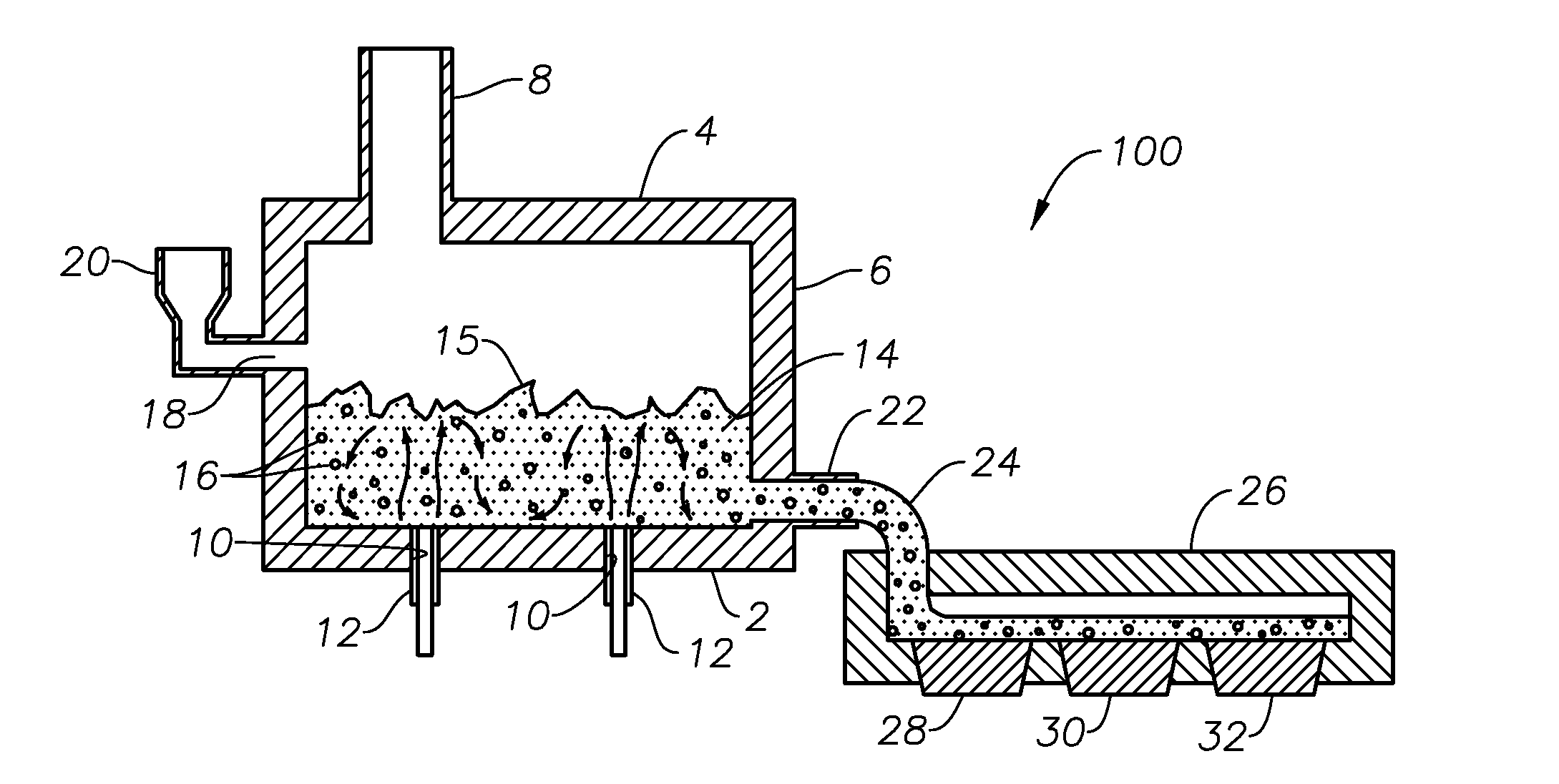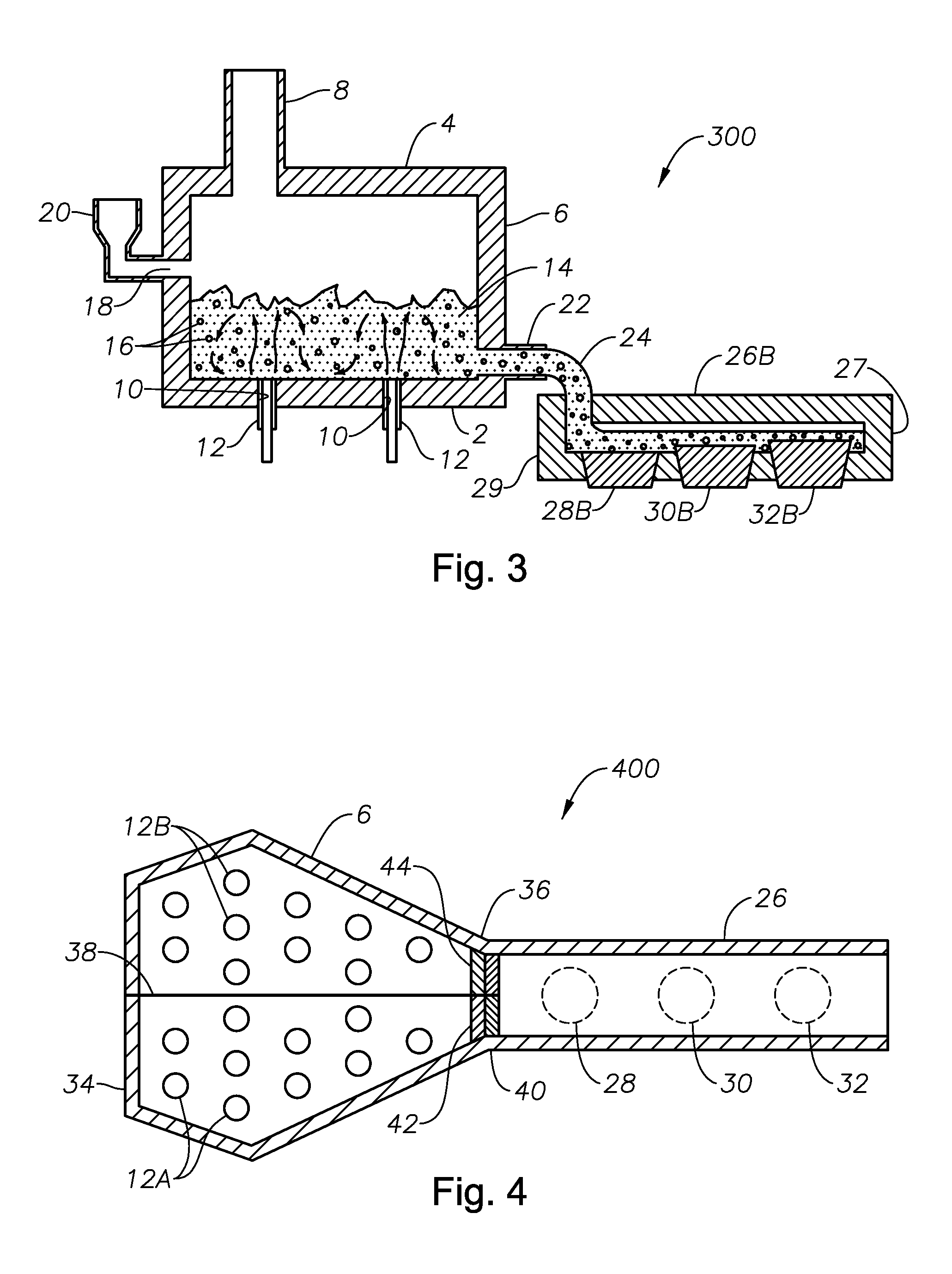Process of using a submerged combustion melter to produce hollow glass fiber or solid glass fiber having entrained bubbles, and burners and systems to make such fibers
a technology of combustion melter and hollow glass fiber, which is applied in the field of combustion furnaces, can solve the problems of turbulence of molten material or partially molten material, and none of the previous solutions have been recognized
- Summary
- Abstract
- Description
- Claims
- Application Information
AI Technical Summary
Benefits of technology
Problems solved by technology
Method used
Image
Examples
embodiment 700
[0076]As noted herein, in certain embodiments it may be beneficial to inject alternative, non-fuel gas species into molten glass produced by an SCM. One or more tubes or conduits 712, 714 may be provided for this purpose, as illustrated schematically in FIGS. 7 and 7A. Tubes or conduits 712, 714 may terminate near the flow exit of annulus B in ports 713A, 713B, respectively, positioned in primary oxidant conduit 704. Conduits 712, 714 may be positioned in thru-holes 722, 716, respectively, in a first end plate 715. Optional valves 736 may be provided to control and / or adjust flow of alternate gas species through conduits 712, 714. Thru-holes 728, 730 allow a cooling fluid such as water to enter and exit outer annulus A for cooling. One or more valves 740 may be provided to control in-flow of primary fuel. FIG. 7A provides a schematic plan view of apparatus embodiment 700. Of course, more or less than two alternative gas species conduits may be provided, as may more or less than two ...
embodiment 800
[0080]As illustrated in embodiment 800, body 824 may include a circumferential lip 840 that abuts against an overhang portion 815 of end cap 813. End cap 813 has a length or height L1, and lip 840 has a length L2 from overhang portion 815 to upper surface 836 of body 824, where L2 may range from about 0.25 inch to about 2 inches. Circumferential lip extension 840 extends away from upper surface 836 of body 824 and generally parallel to longitudinal axis L1. End cap 813 may extend above exit 825 of the substantially central passage of hub 826 a distance L1, which may range from about 0.5 inch to about 6 inches. Vertical connector section 829 may have a length L3 ranging from about 0.25 inch to about 1 inch. As illustrated in FIG. 8B, exit 825 of the substantially central passage has a diameter L4. L4 may range from about 0.25 inch to about 3.0 inches. Lengths L1, L2, L3, and L4 are parameters that may be changeable and / or adjustable (as those terms are defined herein) in certain embo...
PUM
| Property | Measurement | Unit |
|---|---|---|
| angle | aaaaa | aaaaa |
| β angle | aaaaa | aaaaa |
| angle | aaaaa | aaaaa |
Abstract
Description
Claims
Application Information
 Login to View More
Login to View More - R&D
- Intellectual Property
- Life Sciences
- Materials
- Tech Scout
- Unparalleled Data Quality
- Higher Quality Content
- 60% Fewer Hallucinations
Browse by: Latest US Patents, China's latest patents, Technical Efficacy Thesaurus, Application Domain, Technology Topic, Popular Technical Reports.
© 2025 PatSnap. All rights reserved.Legal|Privacy policy|Modern Slavery Act Transparency Statement|Sitemap|About US| Contact US: help@patsnap.com



